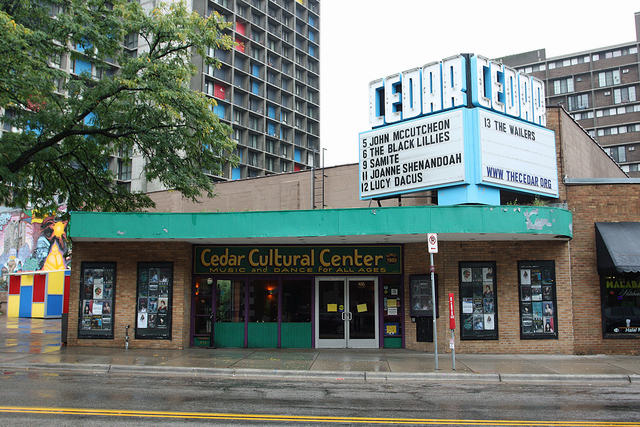Cedar Village Theater
416 Cedar Ave. So.
Minneapolis
This venue was located on the West Bank in Minneapolis.
THE CEDAR THEATER
The Cedar Theater opened on October 28, 1948, as a movie theater, showing the film “Big City,”directed by Norman Taurog. (There had apparently been another Cedar Theater in the 1920s at 713 Cedar Ave.) The Cedar Theater at 416 Cedar Ave. was built by Nathan Shapiro and showman Ben Berger. Nate Shapiro had previously owned Curly’s Night Club. The new theater was constructed by Sebco Inc., a firm that specialized in theaters and night clubs.
Will Jones reported that “a couple of dingy shops and walk-up apartments were torn down to make room for the movie house.” Living quarters were found for people who were forced to move. It was the first theater in the area in 13 years. Berger, president of the North Central Allied Independent Theater Owners Association, had initially blocked Shapiro from getting his license, but after protests from the neighborhood, including children from the Pillsbury Settlement House, he relented and became a partner. (Minneapolis Tribune, October 28, 1948)
The initial announcement said that the theater held 820 patrons, with restrooms in the basement.
Front walls are completely draped, there being no proscenium arch, and decorated with modernistic facial figures before the drapes. The ceiling is blue-green, walls tan and white striped, the foyer decorated in brick and plaster. A heavy-duty air conditioning system has been installed, as well as completely modern projection equipment … The front attraction board is reached from the top of the canopy, obviating the use of ladders in changing the board. (Minneapolis Star, October 25, 1948)
A contest was held to name the theater, with suggestions like
- The Humphrey
- The Stassen
- Snoose Gardens
- The Casbah
But more than 500 people suggested the Cedar, and the Cedar it was. The Southside Businessman’s Association provided a $250 prize to Mrs. R.E. Mellen for submitting the best reason for the name.
Jones also noted that the seats were varying widths, in order to stagger the aisles and provide unobstructed views.
The marquee was constructed by the Naegele Co. for $1,500.
PORN AND UNDERGROUND
It appears that was in about September 1964, that the theater began showing adult movies. Admission for a sizzling double feature was only $1!
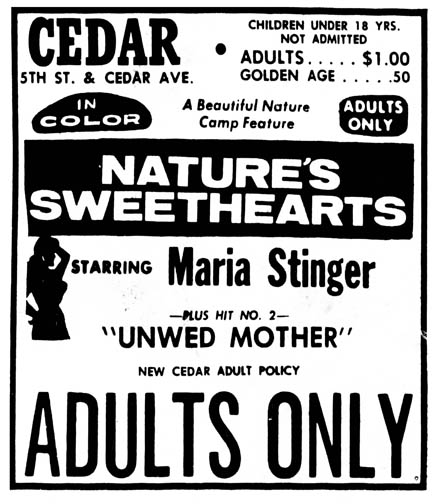
On October 1, 1967 the theater began advertising “Underground” films, which were still Adults Only.
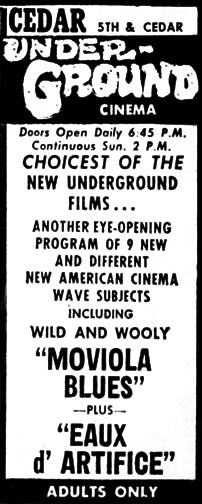
In January 1968, they showed a “Giant ‘Hippie’ Festival Devoted to the Life and Loves of Hippies!”
In March 1968 they presented an Andy Warhol Film Festival.
But on June 13, 1968, the theater announced that it was coming up from the Underground for the summer and went back on the porn train, showing those classic films, “The Acid Eaters” and “The Brick Dollhouse.”
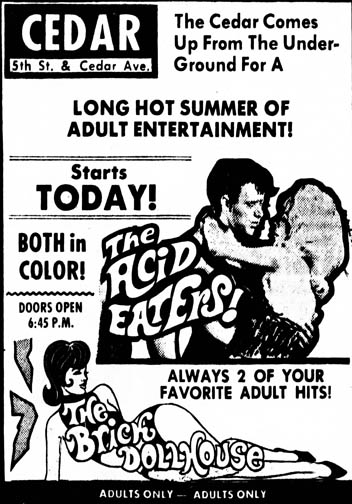
The theater was billed as the Cedar Underground Cinema from November 14 to December 6, 1968. The one below appeared when John Lennon was still a Beatle and Yoko Ono was still his girlfriend.
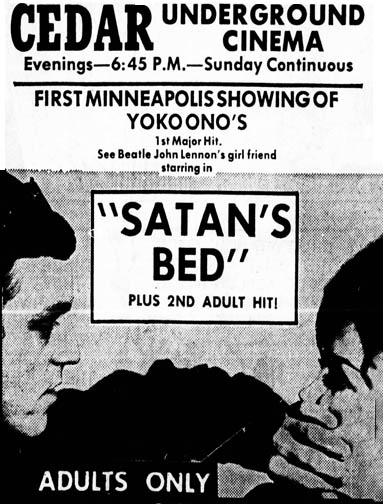
The last ad for the Cedar Theater, again showing adult movies, may have been on January 23, 1969.
THE CEDAR VILLAGE THEATER
On March 1, 1969, the newly renamed Cedar Village Theater became the home of the Contemporary Dance Theater, founded by Loyce Houlton. The building had recently been purchased by the Harris Company from Ben Berger. A $33,000 remodeling job created a stage, removing 300 seats – much of the renovation was done by the dancers themselves. The first performance of the now-renamed Minnesota Dance Company was on Saturday, March 15, 1969. (Minneapolis Tribune, Allan Holbert, March 16, 1969)
Other groups rented the theater as well, including:
- The Center Opera Company
- The Minnesota Opera Company
- The Nancy Hauser Dance Company
- The Childrens’ Theater Company
- The Deja Vu Film Society, which screened old movies and shorts
CONCERTS AT THE CVT
The following is not a complete list, but comes from the online resource of the Minneapolis Star and Tribune. Additional listings and photos are welcome: please feel free to contact me.
1970
In 1970 the Walker Art Center began sponsoring concerts at the Cedar Village Theater and others followed suit.
BOBBY BLUE BLAND
Bobby Blue Bland was the first in the Walker series, performing with a six piece band on February 3 through 5, 1970.
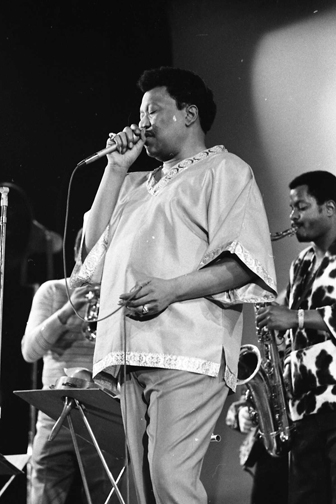
DOUG KERSHAW
Doug Kershaw, March 2, 1970. Kershaw was backed by local band Bamboo, and Will Shapira’s review the next day in the Minneapolis Tribune indicated that there was a clash of styles between the two. Also frustrating Kershaw was a crying baby during “Louisiana Man,” and a phalanx of photographers at the edge of the stage. He cut the second set short at 10 pm.
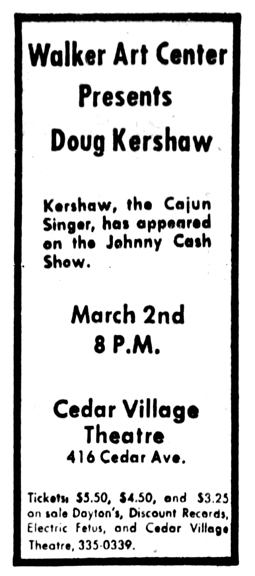
HOWLIN’ WOLF
Howlin’ Wolf appeared on April 2, 1970, sponsored by the Walker.
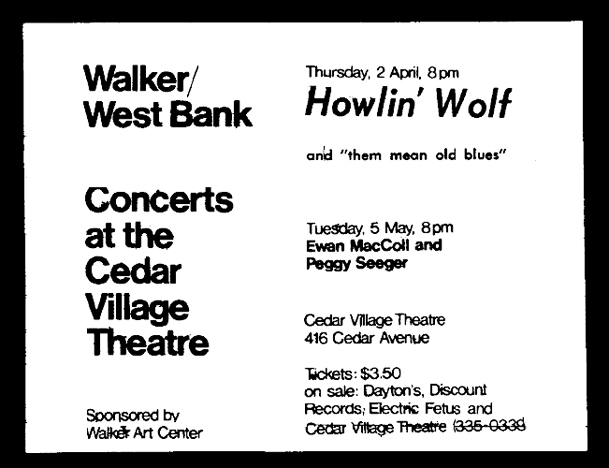
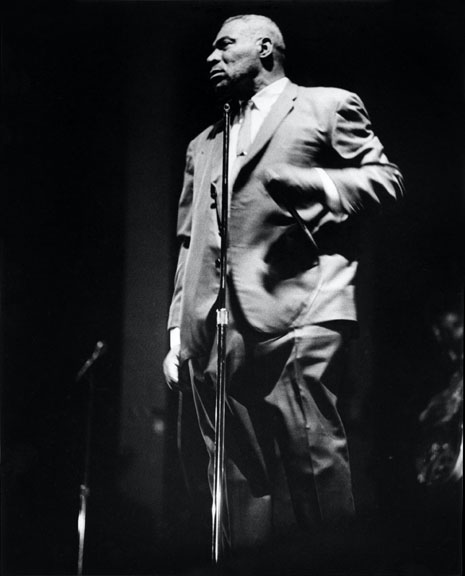
Ewen McColl and Peggy Seeger, May 5, 1970, sponsored by the Walker.
Willie Mae Thornton appeared on May 6, 1970. Her appearance was sponsored by the Scholar Coffeehouse.
Nineteenth Amendment, May 19, 1970
HEVY GUNZ
Reviewer Irv Letofsky didn’t manage to mention the date, but presumably on May 30, 1970, a “new and anarchistic comedy ensemble” called Hevy Gunz Industries held the World Premier of their record “Dope on Dope and Dope Doops” at the CVT. The record wasn’t actually out yet, and again, it was unclear whether they played the tapes or acted it out, but the record was to be the first of three LPs, followed by “Right On Time” and “Moon Over Miasma.”
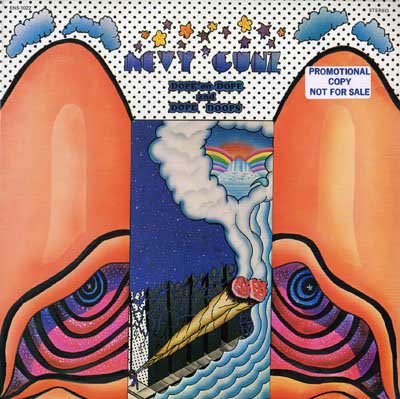
The record was designed for “the dope-crazed depth of the hippie netherworld,” following the efforts of Nurd Nork in his crusade to stop the scourge of dope – the evil weed.” About 500 people attended the event, including three or four infants, a couple of senior citizens, a few of the inevitable narcs, and at least three dogs, two of which got into fights during the production.
The records were being produced by Pandora Productions and Cold Shot Film Productions. The project started when Pandora sponsored a half-hour series on KUXL radio on Sunday nights. Cast members included Paul Davies, Kiki Sherman, Pat Donaghue, Ruth Schroeder, and Sean Blackburn. Some of the radio bits were being taped, but then writer/director Tom Olson (aka Tom Py) was “spooked by an anti-drug radio program run simultaneously on several stations.” He wrote the script for the first album in eight hours, and the cast churned it out in an all-night recording session.
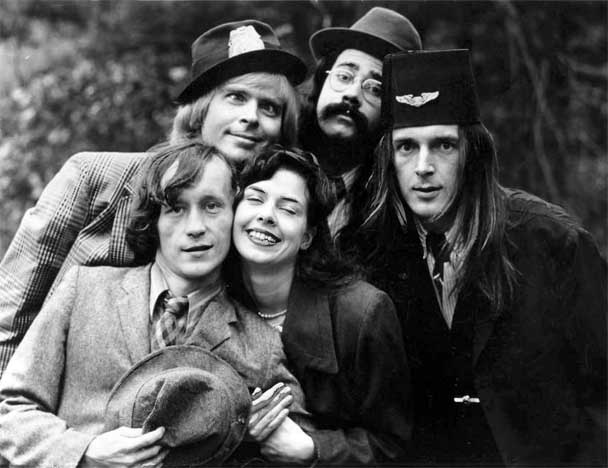
The producer was Bob Zeller of Cold Shot Films, who was financing the recordings. Zeller was a former instructor at Augsburg College, at the time teaching a film class at the Minneapolis Institute of Arts.
Letofsky found the content to be similar to Firesign Theater, but more political and heavy-handed. “The straights are not likely to get it.” The group tried to get the record played on the radio, but the answer was “No Way.”
The group actually released a double album called “Rownd Wun” in 1970. “Right On Time” is on YouTube. A second one called “Dope on Dope and Dope Doops” was released in 1971 on Enterprise Records.
June 9, 1970: Rock Concert, three bands, it says. Great!
The Paisleys and the Litter, June 16, 1970. Ken Schaffer Concert Series.
June 23, 1970: Ken Schaffer Concert Series.
Sonny Terry and Brownie McGhee appeared on June 30, 1970, sponsored by the Walker.
The Paisleys, July 7, 1970
Mojo Buford Band, with Lonnie Knight playing during breaks; July 28, 1970. Ken Schaffer Concert Series.
White Lightning: August 4, 1970. Ken Schaffer Concert Series.
BEAR, BEAVER, PEACOCK
Local band Bear, Beaver, Peacock and Cassidy performed on September 17, 1970.
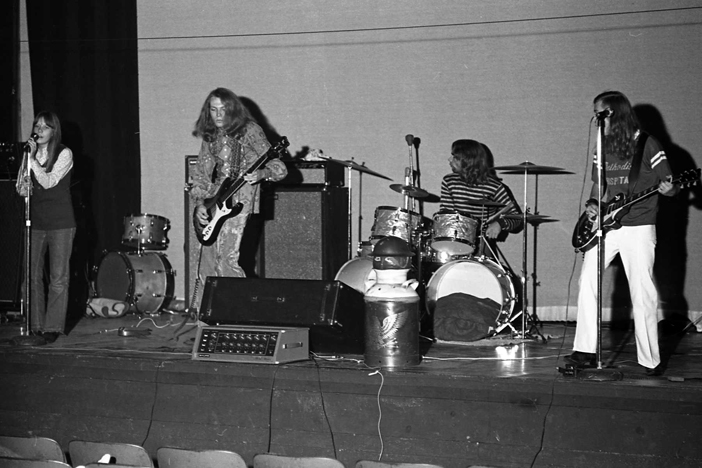
Mark Lundeen on guitar, Drummer is Rick Hochstein (Bear) on drums, and Mark Harland on bass. Unknown singer.
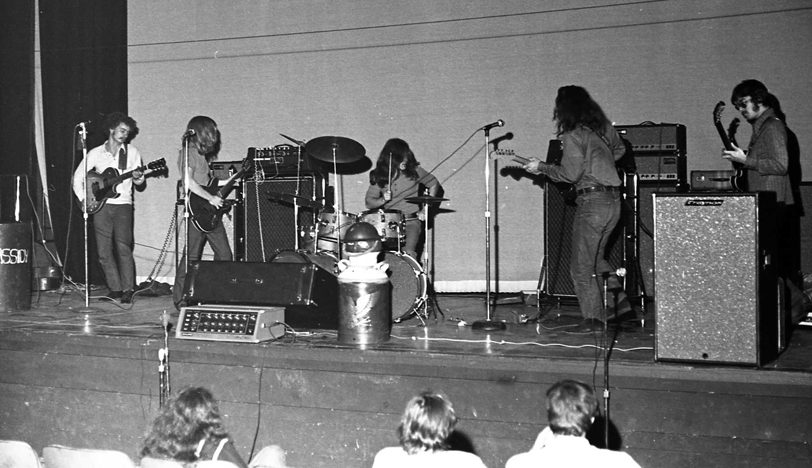
John Hewitt was kind enough to find out the lineup of Cassidy from his Dreamrunners bandmate Chris McGown. The early lineup of Cassidy pictured below, from left to right, is Willie Ries on guitar, Chris McGown on guitar, Mike McClure on drums, Don Strand on guitar, and Dick Crysler on bass. Chris and Don both used Vox Super Beatle Amps. Thanks, John!
Baccanalia, the Marauders, and Ken Schaffer on October 27, 1970.
Charlie Musselwhite Blues Band and Mama’s Home Cookin’ – Lights by Center of Consciousness. November 3, 1970.
Chrickett, the Paisleys, and Dean Carr: November 24, 1970.
“Rock Concert,” December 8, 1970
1971
MORE HEVY GUNZ
Hevy Gunz Industries was back on January 3, 1971, and this time Marshall Fine was not amused. The group had had a lot of buildup in the Minneapolis Tribune and the Minnesota Daily, comparing the troupe to the successful Firesign Theater.
But while Firesign is moving to subtler and more cutting material, Hevy Gunz is content with heavyhanded, tasteless bits about mental retardation and a deodorant for male genitals. No one was introduced and the show started an hour late. They did a number of funny pieces and displayed occasional flashes of insightful humor, however. And, admittedly, some of their bad taste humor was humorous. They seemed to be reaching and to have the potential to be really funny. But obviously it will take time.
Preceding Hevy Gunz were the Jook Savages, a Minneapolis group from the Cowboy Orchestra Waifs (COW) Band mold. Where the COW Band is bold in its experiments with rhythms and atonality, much like Miles Davis and Don Ellis, the Jooks were just stoned and untalented.
A classic Marshall Fine review! (Minneapolis Star, January 4, 1971)
YELLOW DOG CONTRACT
Yellow Dog Contract, January 29, 1971. Mark Peterson produced this show and drew the poster.
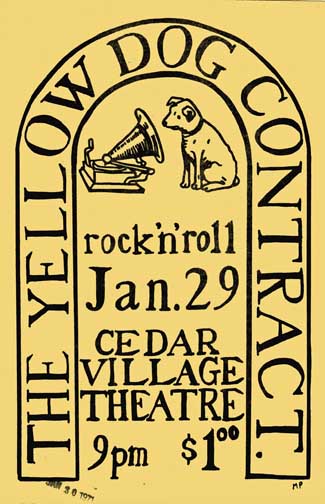
Stephen Cowdery was at the Yellow Dog Contract Show and was kind enough to send in the photos below:
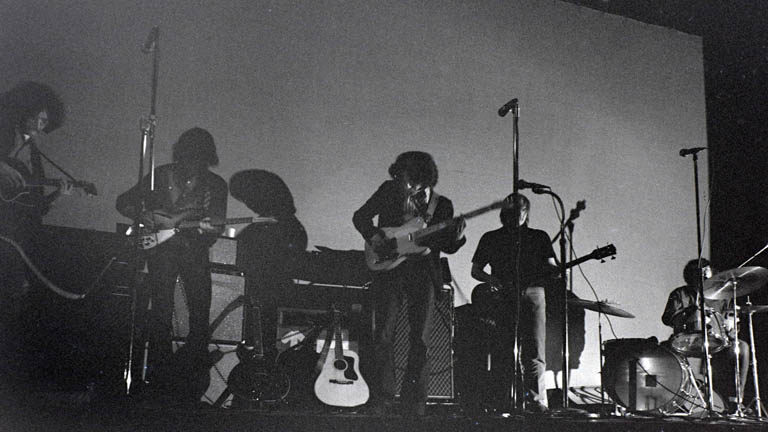
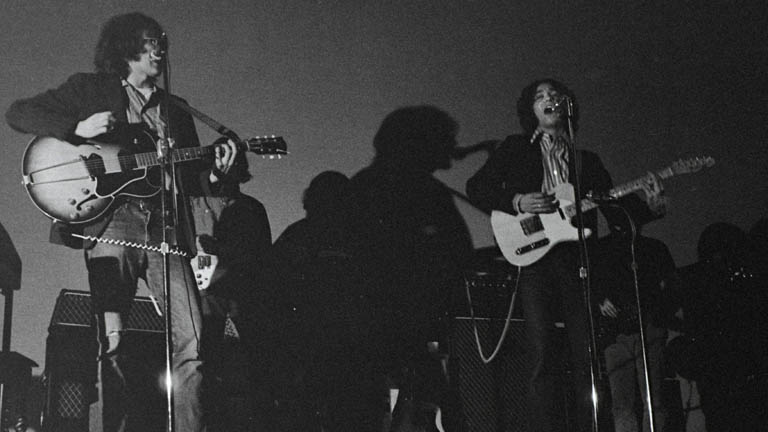
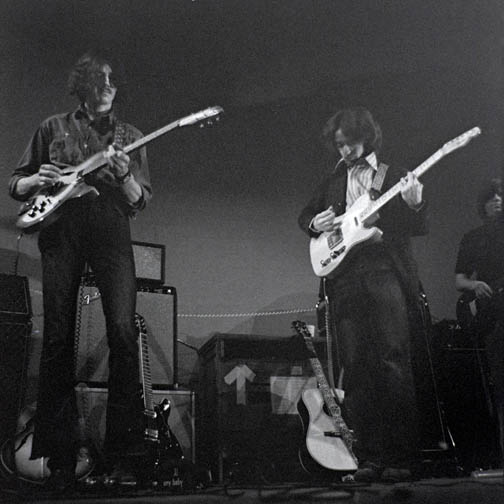
Thank you to Sandra Kenyon for help identifying band members!
April 11, 1971: Faculty Recital with Dave Ray, Dean Carr, Dean Granrose, Roy Alstad, and Ken Mozen.
Summer Music Festival and Sunday Night Concert Series
July 4, 1971: West Bank Independence Day Festival: American Rock and Roll Music, Noon to Midnight
July 18, 1971: Country Rock
August 1, 1971: Blues
August 15, 1971: Jazz
August 28, 1971: Genesis (all girl band – not part of festival)
August 29, 1971: Rhythm & Blues
September 11, 1971: Cedar-Riverside Autumn Festival (one of several venues)
1972
As part of the Snoose Boulevard Festival, on April 8, 1972, Anne-Charlotte Harvey performed at the Cedar, along with Festival organizer Maury Bernstein and dialect comedian Steve Benson.
The Grande Illusion Cinema hosted screenings of classic and art films at the theater in 1972.
1972 was a big year for dance and opera performance at the theater.
1973
On March 4, 1973, Skogie and the Flaming Pachucos had a concert at the Theater, presented by Encore Corp. They were just released their album “The Butler Did It,” produced by David Zimmerman.
April 1, 1973: Willie Murphy and Betty Brenner, and jazz groups The Night Visitors and Mananga performed in what was billed as “An Evening of Jazz and Blues Music.”
April 19, 1973: The Honeydripper No. 1 Revue was made up of Dave Ray, Tony Glover, Willie Murphy and the Bumblebees, and the West Bank Trackers.
The second Snoose Boulevard Festival opened on April 27, 1973, with an all-Swedish concert at the CVT. A Swedish TV team filmed the Festival for a TV special shown in Sweden.
The Honeydrippers, minus the West Bank Trackers, made a return performance on December 2, 1973.
1974
Four “Homegrown” jazz concerts were sponsored by the Cedar-Riverside Arts Council and the West Bank School of Music, funded by the National Endowment for the Arts:
February 24, 1974: Ted Unseth and the Wolverines, Butch Thompson, and the West Bank Trackers. This first concert drew a “raucous full house.”
March 31, 1974: Mike Elliot Trio and the Art Resnick Quartet
April 14, 1974: The Night Visitors and the John Einweck Band
May 19, 1974: Whole Earth Rainbow Band, Scott Fraser, and the Milo Fine Free Jazz Ensemble.
The third annual Snoose Boulevard Festival featured Anne-Charlotte Harvey at the Theater on May 24 to 26, 1974. The opening night was in Swedish. The Festival was covered by the Swedish Broadcasting Corp. and NPR.
CRISIS AT THE CVT
At some point the Cedar-Riverside Arts Council had been the organization that was operating the theater. The Council was funded by a grant, which ran out in mid-1974. This left the theater in the control of Cedar-Riverside Associates (CRA), the company that was developing the area. But the company was facing money problems too – remember the recession of the mid ’70s?
Meanwhile, the theater’s condition had severely deteriorated, and one by one the tenants were moving to other quarters. CRA was looking for buyers or tenants, to no avail. The theater was closed.
BACK TO THE CEDAR THEATER
The theater re-opened, again named the Cedar Theater, on January 29, 1975, showing “Lenny Bruce Without Tears.” It was leased by Ridgeway Theaters, Inc, a small, independent company, as described by General Manager Marty Grodin. The theater underwent another $30,000 in renovations, and began screening a variety of films.
The fourth annual Snoose Boulevard Festival did not forsake the Cedar – Anne-Charlotte Harvey held her annual concerts there on May 23 to 25, 1975.
The Cedar also hosted occasional live music – I won’t go too far past my 1974 limit, but the Suicide Commandos and Flamingo appeared there on May 15, 1977.
The Cedar Theater closed again, in May 1986.
THE EXTEMP
In September 1986, the Coffeehouse Extempore relocated to the Cedar. At that point the Cedar had 400 seats and a stage measuring 35′ by 50.’ The University Film Society showed movies three times a week on the big screen. (Minneapolis Star and Tribune, September 27, 1986)
The Coffeehouse Extempore went bankrupt in early September 1987. Its last concert was by folk singer Gordon Bok on September 2, 1977. This left the U Film Society out on the street as well. (Minneapolis Star and Tribune, August 28 and October 25, 1987)
CEDAR CULTURAL CENTER
In 1989, CRA sold the building for $1 to Minnesota STAR, a non-profit arts organization. The group moved into the building in the fall of 1988 and took it over officially in February 1989. It was at this time that the building was renamed the Cedar Cultural Center. The floor was leveled and seating was cut down to 300 – the old seats were donated to the Theater in the Round. The first month was dedicated to Celtic music. Their first concert was held on March 3, 1989. (Minneapolis Star and Tribune, Jon Bream, March 10, 1989)
